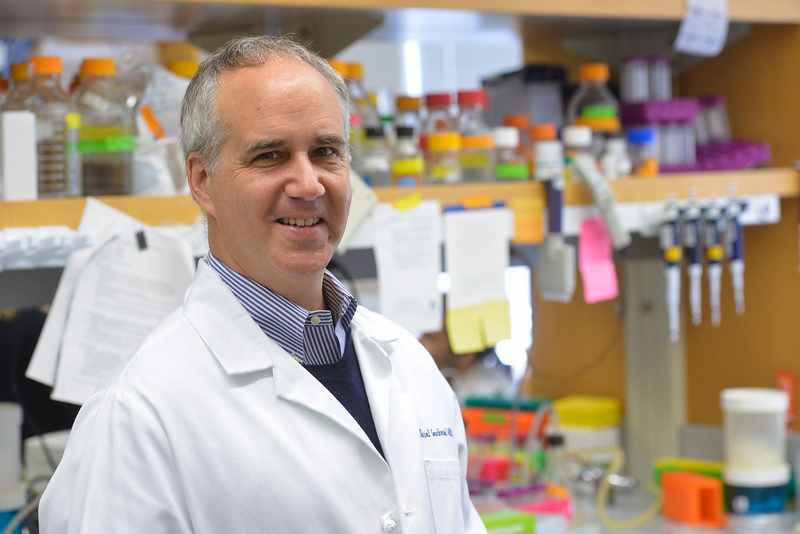Researchers discover new method to identify origins of schizophrenia

Daniel Geschwind, UCLA professor of neurology and psychiatry, was the first to map the chromosomal structure of the brain to find the origins of neuropsychiatric disorders. (Courtesy of Daniel Geschwind)
By Deanna Necula
Oct. 26, 2016 11:38 p.m.
UCLA researchers unveiled a new method to trace the origins of neuropsychiatric disorders, including schizophrenia.
The study attempts to reveal how the configuration of chromosomes in the brain can influence an individual’s likelihood to become schizophrenic.
Hyejung Won, a postdoctoral fellow and lead author of the study, said the research team used a technology called Hi-C to view how the chromosomes are coiled in brain cells. Previously, DNA sequencing methods allowed researchers to assess the linear DNA sequence but did not inform them of the 3-D representation.
The chromosomes’ final configuration can help researchers understand what makes an individual more or less likely to acquire schizophrenia and other neuropsychiatric disorders, she said.
“DNA is a long structure – if you stretched it out completely it would reach from LA to Santa Barbara,” Won said. “But that structure is compacted into a cell so small we can’t see it.”
Won said the 3-D folding of chromosomes in the brain is not a random process. Rather, interactions between different parts of the genome, called contact points, can provide clues for how schizophrenia-linked genes are regulated.
Daniel Geschwind, professor of neurology and psychiatry, said assessing contact points is particularly relevant for determining DNA function because noncoding regions are more likely to regulate genes they are spatially in close proximity to.
He said grasping the spatial relationship between parts of the genome is important because regions that are very far from one another in the linear DNA sequence may actually be close together in the 3-D configuration.
To assess how the contact points contributed to schizophrenia, Won first determined which genes have been linked to schizophrenia, based on prior research. Then, she analyzed the contact points between the genes and certain noncoding regions – parts of the genome that do not code for protein – to determine how they were regulating the expression of the schizophrenia-related genes.
“Only 3 percent of the genome contains genes, which code for proteins,” Geschwind said. “The vast majority of the genome is involved in the regulation of gene expression rather than structure of the protein.”
Typically researchers use genome-wide association studies, which scan DNA for genes that can cause certain diseases or disorders.
Genome-wide association studies attempt to identify DNA regions that increase susceptibility for disease. However, the genomic regions that the studies pinpoint are often outside of the known portion of the genome, Geschwind said. Therefore, their function is largely unknown.
“Our work made a critical connection between studies that have found genes or regions that increase susceptibility to disease and the actual mechanism by which these genes are acting,” Geschwind said.
Geschwind said his team was the first to map the chromosomal structure of the brain.
“We showed how one could use this kind of data to answer a number of biological questions,” Geschwind said. “It had been used to map the chromosomal structure (of other tissues), but it hadn’t been applied to understand brain disease. You get an entirely new vista on gene regulation.”
Geschwind said the next step is conducting further experiments to narrow down which noncoding regions most influence regulation and then evaluating the product of their regulation. Then, researchers would be significantly closer to understanding how and why schizophrenia and other disorders arise, he said.
“(Our work) provides a road map for understanding any complex genetic disease,” Geschwind said. “You can go in many directions. Now, this gives you a map for the best and fastest route to take to better understand the genetic basis.”


